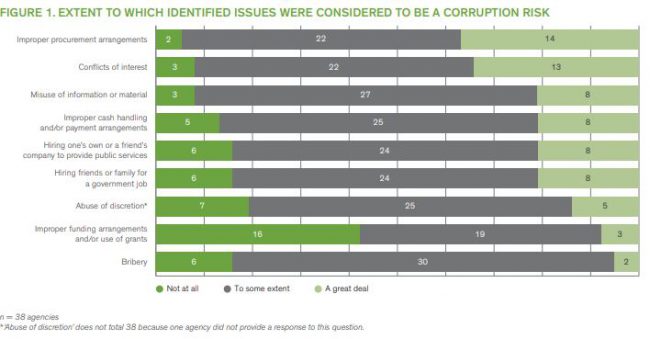Data analytics and data mining are helping Victorian government agencies prevent corruption, a report by the state’s anti-corruption watchdog has found.

The Independent Broad-Based Anti-Corruption Commission (IBAC) in 2018 carried out a review of integrity frameworks across 38 Victorian government agencies to find out what they were doing to prevent and detect corruption and how effective their methods were.
It found an increasing use of innovative data analytics to identify anomalies in expenses, pinpoint suspect gift-giving patterns and even identify potential links with criminal figures.
The analytics and mining were generally done by teams – often from IT, forensics, internal audit and procurement – using structured data that could be readily analysed, the State Government Integrity Review released late last month found.
For example, data analytics could be used to red-flag suspicious purchases by checking transactions related to accommodation, flowers and restaurants, as well as duplicate payments and expenses incurred on weekends.
One agency monitored declared conflicts of interest via a system that collated, tracked and compared employee data and declarations. Analytics were also used to scrutinise gifts and benefits to identify the sorts of gifts that were being received, and detect gift-giving patterns among suppliers.
Identifying organised crime links
Data mining was also used to check employee contact lists against a list of people involved in organised crime, IBAC found.
A case study contained in the report reveals that one unidentified a government department maintained an in-house forensic lab with two employees dedicated to fraud and corruption prevention and tasked with analysing employee network drives, website access, email profiles and archives, and backed-up phone an iPad data.
The process involves screening between 500 and 700 computers a year. Seventy-five percent of the scans are random and the remainder focus on high-risk roles such as people working in human resources, procurement and finance.
The laboratory also recently screened individuals name in the Panama Papers against a list of employees.
“Data analytics can be used to detect and prevent fraudulent and corrupt conduct, including by identifying early warning signs of potential integrity breaches, understanding trends that might be associated with high-risk issues, and monitoring the effectiveness of controls,” the report says.
“To use data analytics most effectively, agencies need to have identified their areas of highest risk and collect information in a way that facilitates analysis.”
Risk champions
Interactive training, integrity-related performance measures and even the appointment of “risk champions” were other innovated corruption-prevention measures identified during the review.
Some agencies used “risk champions” or individuals within the agency with a specific role to promote risk awareness, provide support to business units and report to senior management, IBAC said.
There was also value in incorporating ethical standards in performance assessment systems and remuneration incentives, IBAC said, as well as including integrity criteria in job descriptions and performance plans.
CEO Alistair Maclean said government agencies were becoming increasingly aware of corruption risks and were exploring new ways to root it out.
He urged all government agencies to use the findings of the review as a measure against their own integrity frameworks.
Corrupt conduct could undermine trust in government and hamper the delivery of vital services and projects, Mr Maclean said.
“Developing cultures of integrity and frameworks to prevent corruption must be a continuing focus for every state government agency,” he said.
However, the report found that only one third of respondents felt they knew how to report corrupt conduct if they observed it, underscoring the need for clear and accessible reporting mechanisms.
The report did not identify the agencies surveyed for the report but said they included 13 small agencies, 18 mid to large-sized entities and seven government departments.

Comment below to have your say on this story.
If you have a news story or tip-off, get in touch at editorial@governmentnews.com.au.
Sign up to the Government News newsletter.





Leave a Reply